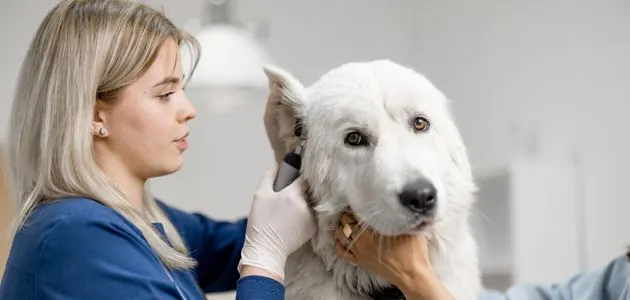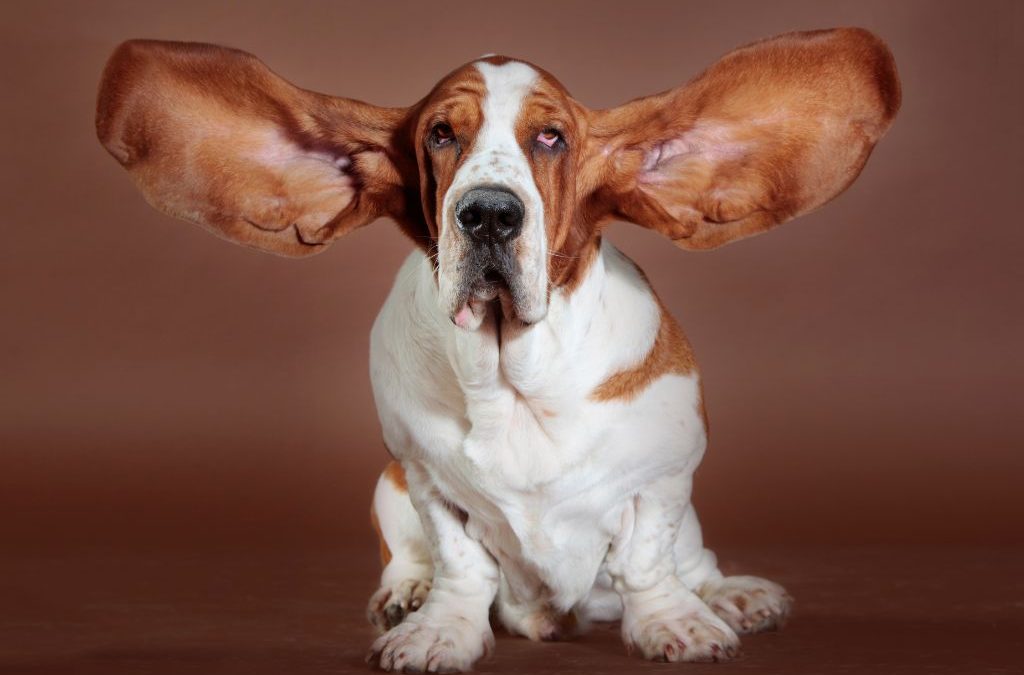Ear infections in dogs are common but can be harmful and cause a lot of pain and suffering if left untreated. It’s important to keep an eye out for symptoms of an ear infection and seek veterinary care as soon as possible if you suspect your dog may be infected.
Most dog owners will recognize symptoms such as head shaking, scratching at the ears and whining. Let’s look at why dog ear infections can be dangerous and how you can help prevent them.
The Dangers of Dog Ear Infections

An ear infection can cause significant pain and discomfort for your dog. Dogs with ear infections may shake their heads, scratch at their ears, and hold their ears in a peculiar position. They may also have difficulty sleeping and have a decreased appetite.
If left untreated, ear infections can cause damage to the ear canal, including the destruction of the ear drum and loss of hearing. They can also lead to more serious conditions such as meningitis, brain abscesses, or even sepsis.
Recurrent ear infections can be difficult to treat and can lead to chronic ear problems. This can be frustrating for both the dog and the owner, and can also be costly in terms of veterinary bills.
Untreated ear infections can also lead to secondary bacterial or yeast infections, which can be more difficult to treat than the original infection.
How To Prevent Dog Ear Infections

As we’ve said, ear infections are a common problem for dogs, but there are steps you can take to prevent them.
Keep Them Clean
Make sure your dog’s ears are clean. Dogs with floppy ears are particularly prone to ear infections, as the shape of their ears can trap moisture and bacteria.
To clean your dog’s ears, use a cotton ball or a soft cloth dampened with a gentle, pH-balanced ear cleaner. Never use cotton swabs, as they can push wax and debris further into the ear canal.
Keep Them Dry
Keep your dog’s ears dry, especially after bathing or swimming. If your dog’s ears are particularly prone to infections, you can use ear-drying solution, or even gently blow dry the inside of the ears with a low-heat setting.
How Do They Look and Smell
Watch for signs of infection, such as redness, swelling, or a foul odor coming from the ears. If you notice any of these symptoms, contact your veterinarian for an exam.
Prevent Allergies
Do what you can to prevent allergies, which can lead to infections, by keeping your dog’s environment clean and free of allergens. This may include vacuuming and dusting frequently, and using air purifiers.
Maintain Overall Health
Infections in the ear are often a sign of some other underlying issue with your dog. Maintain your dog’s overall health by feeding a balanced diet, providing regular exercise and keeping up with regular veterinary check-ups.
By following these steps, you can help prevent ear infections in your dog and keep them healthy and happy. If you have any concerns about your dog’s ear health, consult with your veterinarian.


Dogs who scratch their ears frequently can break the skin, which can lead to infections. Keep your dog’s ears free of fleas and other parasites to reduce scratching.